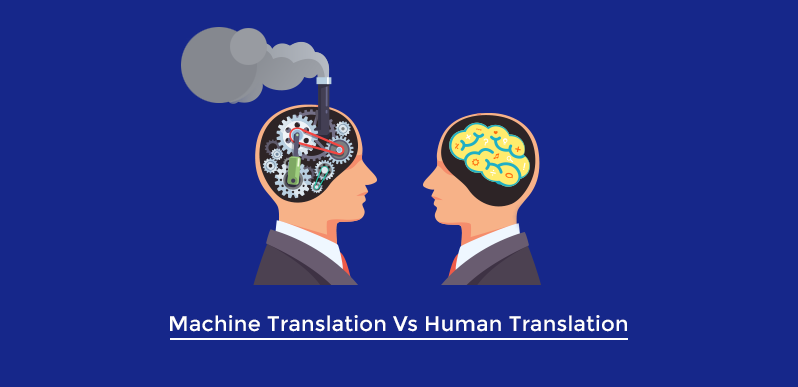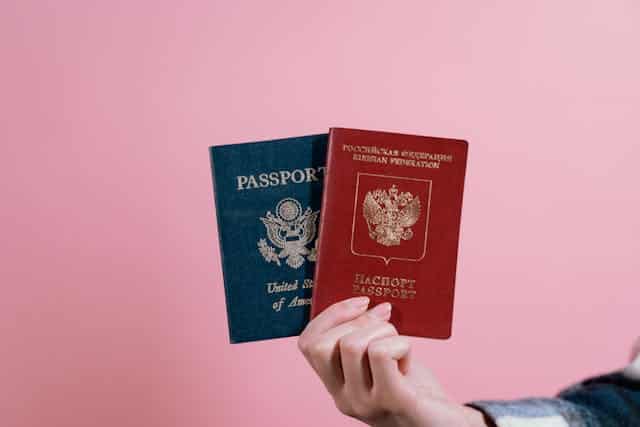Estimated reading time: 9 minutes
Translation is an indispensible communication tool for businesses and Governments; it helps smooth flow of communication between companies, with customers, and between countries as well. Translation refers to ‘the communication of a source language text through an equivalent target language text’, according to Wikipedia; in simpler terms, it means changing the language of the original message into one understood by the listener or reader, keeping as close to the meaning as possible.
If you want to know how good a particular piece of translation is, you need to check how fluent and natural the translated sentence/s sound.
Also read the Benefits of Learning a Foreign Language
Introduction: Machine Translation and its Rise
Though human translators from translation agencies or freelancers have been the most preferred and common way of getting translations done, machines have been making their entry into this field in the past few years.
But the question arises whether machines are reliable enough for the job. The debate of whether machines can replace humans has been raging for decades, and it has begun in the translation arena too. After all, thanks to Smartphones and home automation and so on, we have gadgets as part of our everyday lives – and haven’t they made our lives easier and more comfortable? So will gadgets and machines take over one day and render the human race redundant? Well, I doubt if we’re going to see that happen anytime soon – after all, you need humans to make those gadgets in the first place. Anyway, the fact remains that machines are penetrating all aspects of our lives – translators are no different.
The use of machine translators has been increasing since its introduction a few years ago; we can judge this from the popularity of Google Translate and similar tools like Ginger Translate, Skype Translator, Systran (specifically designed for business communication translation purposes), Papago, and others. Google has added 13 new languages in its translation app, and big businesses are investing millions in developing translation software. For cheaper translation in the long run, eliminating human beings from the translation process will prove to be cost effective – however, it does increase certain risks.


5 Risks of Machine Translation
When comparing Machine translation vs Human translation, since 1950s, scientists have been experimenting with software to enable machine translation, and many improvements have been made since then, and the technology is far more powerful today.
Still, even today, the results from these tools are far from perfect and there are some crucial risks of using Machine Translation:
1. Wrong Connotations
For one, a single word may have different connotations; different meanings depending on the situation, or the context. For example, the word ‘break’: ‘I need a break from work’ and ‘I need to break this habit’ or ‘It’s going to fall and break’ – here, the word break has a different meaning in every sentence!
Machines or software, are not yet intelligent enough to distinguish the word meanings based on context, and may provide a hilarious translation.
2. Word to Word Translation Only
Again, when choosing a better translator between machine translation or human translation; the idioms, tone, cultural references upon which a language is build and impart any particular message; cannot be understood by any machines or software so far. As of now, machines can only do a literal, or word to word translation alone.
3. Differences in Sentence Construction
The manner of sentence construction also differs from language to language. For example, the French sentence: ‘J’ai cinq chemises bleus’ if translated word for word, sounds this way in English: ‘I have 5 shirts blues’, instead of the proper, ‘I have 5 blue shirts’. This is because the color adjective is placed after the noun in French, and is also changed as per the number. So the software could end up giving you a grammatically wrong sentence!
4. Context Missunderstanding
A perfect understanding of the context, the nuances, and tone is required for rendering a perfect translation – which only a human being has. Similarly, there could be words in a language that mean something nasty or embarrassing in another – and a machine will not distinguish; this especially happens in the case of names.
For example, there was a story in Hindi about two legendary Rajputs, Gora and Badal; when I asked for the page to be translated to English, it changed the name of the two protagonists to ‘the Fair’ and ‘The cloud’! Though as common nouns, that would be the meaning, here these words were actually names of people and didn’t need to be translated.
5. Words Not Found
Another disadvantage with this method of translation is that when the machine doesn’t find an equivalent term in the target language, it retains the original word (in the source language) – meaning it doesn’t translate it at all, which is not going to be very useful.
Check out the Top 10 Translation Problems and Solutions
3 Benefits of Machine Translation
Not a lot of benefits can be mentioned when speaking about 100% Machine Translation. These kind of tools perform much better together with human resources in a technique called Machine Aided Translation (Which we will explain later) but these are the Main Benefits of pure Machine Translation:
1. Ease of Translation of Non-Crucial Projects
Yes, it is useful for formulaic language, non-crucial projects, where you need translation of bits and pieces of information, and where there is no chance for the meaning to get altered like the above mentioned examples.
2. Small Text Translation
If you want to simply get a gist of a small text, say, like an email, or what someone is saying in a language you don’t know at all, or to translate simple sentences or phrases – then yes, machine translation can be pretty handy.
But with the technology available currently, I wouldn’t recommend it for the translation of a full document that needs to be understood properly; it could lead to misunderstanding between the parties, and even animosity.
3. Speed
And yes, machines translations are very speedy – much faster than human translators.
Also read Tips for Translating Legal Documents.
5 Main Benefits of Human Translation
We can say there are way more benefits to Human Translation than there are for Machine Translation. We will focus on the 4 Main Benefits of Human Translation:
1. Natural Style and Tone
Human translators are usually proficient in at least two languages; being a native speaker, or having equal fluency in two languages, gives them the ability to translate from one language to another in a manner that makes the translated text seem natural – just like the source text.
2. Dictated Text Translation
Human beings can also translate dictated work; by listening to the tone of the speaker, and the pauses, and volume and so on, a human translator can easily catch the mood of the speech, the context, and will be able to bring out the true meaning and emotion of what the speaker intended; something a machine simply can’t hope to do.
3. Context and Cultural Understanding
Not only in dictated texts but also in written ones, human translators can perfectly understanding of the context, the nuances, and tone of any written text. They can also adapt to the language or dialect
4. Revised Work
Again, normally a human translator – a good and efficient one at least – will give their work a once-over to determine that there are no errors or inconsistencies in the work they have just finished.
5. Creativity and Uniqueness
Human beings are well known for their creativity. For most translators, translating is an art, in which they reflect their thinking and knowledge, creating a unique piece of work for every translation.
Machine aided Translation – A Hybrid Approach
Like we said before, technology and gadgets have pervaded every aspect of our lives. Even human translation; yes, professionals do use computers, but they are the ones in control. Using technology saves time and effort for the person.
Mistakes, linguistic nuances, idioms, cultural references and so on will be picked up and translated in the appropriate manner by the human translator, allowing to retain the original meaning, and a natural fluency. Some professionals make use of something called translation memory software; it works similar to how the ‘add to dictionary’ feature works in MS Word.
When you type a word that MS Word does not know, it underlines it in red, and shows you possible corrections, but also allows you to add that word to its dictionary, so that the next time you type it, the app recognizes and accepts it. Similarly, every word or phrase translated by the human translator is saved in the translation memory so that the next time the same word appears, the memory will identify and translate it without the person doing anything.
Translation memory helps save time and therefore money, and ensures consistency; the terms and phrases will be consistent throughout a certain document. This is especially crucial where technical terms or jargon that is specific for your industry or brand is used.
Also Read Different Types of Translation
The Future of Machine Translation
Experts are of the opinion that machines have only 80 to 85% of the efficiency of human translators and that machines have a long way to go before they can be considered anything close to human translators. However, voice recognition and machine translation technologies are improving with every year.
The tech giants Google, IBM, Microsoft and so on are making huge advancements in this technology, increasing the cooperation between machines and translation. Experts expect the relationship to be further cemented in the near future. Nobody can really predict where the technology will be in 10 years.
It is possible however, that in the future, the bulk of the translation work is carried out by machines and software tools, and human beings act more like editors; they could check the work and correct mistakes and inconsistencies, translate un-translated words, check that the correct tone and emotion is conveyed and so on.
Of course, it can be argued that this could lead to duplication of work, since the human translator may need to go through the entire document as if they were translating it in the first place. But there is no denying the fact that the technology will help save time. Even considering that the machine translation is checked by the human translator, it will still be a much quicker process than if the entire thing were to be done by human beings.
You can also check out the Most Common Translation Mistakes.
However, these are all just conjectures as to what could happen in the future – who knows the truth? As things stand now, for important documents, human translators are your best bet.
TranslateDay provides Legal Documents Translation for all kinds documents. It has been able build an untarnishable trust with their prompt and accurate interpretation. It has become a fast rising player in the translation industry. Translate Day employees the most experienced translators to bring clients a thorough translation with a touch of expertise.


